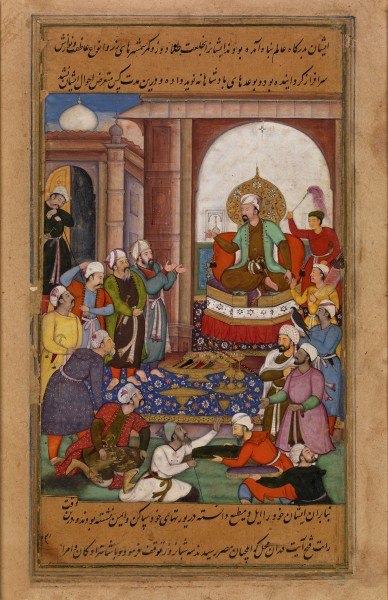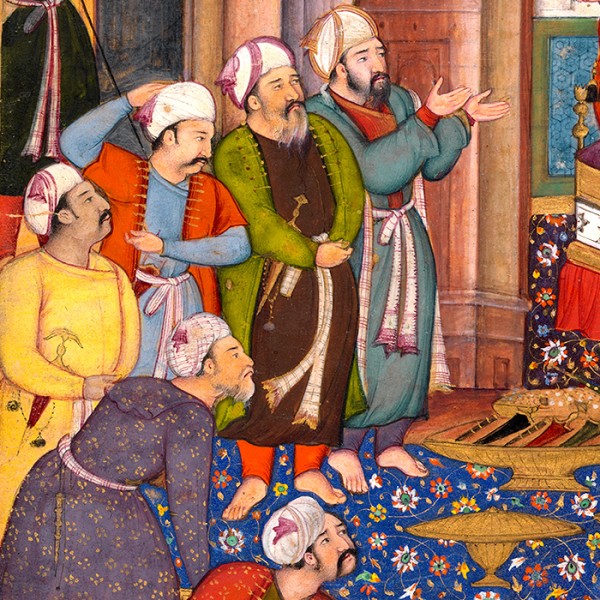Recent Acquisitions of Indian Paintings, London
1st November, 2012 - 10th November, 2012
It is a pleasure to present our latest catalogue with a selection of Indian images from the past 500 years. The works span in time from imperial paintings made for the Emperor Akbar in 1598 to fine portrait photographs by Raja Deen Dayal.
Moments of innovation and brilliance are often the result of convergence, a synthesis of cultures, religions and aesthetics. Akbari painting is the result of the assimilation of Persian, Indian and European styles. It incorporates the lyricism and dynamic planes of Persian painting, an Indian use of colour, exuberance and abstraction, and a realism in portraiture that draws upon European modes of observation. This syncretic approach was mirrored in the life of Akbar himself; he welcomed different cultures and religions at his court, creating an environment of innovation and exchange.
Convergence is also evident across mediums. The 17th century poet Said’a Gilani, for example, was also a master calligrapher and lapidary, responsible for carving inscriptions on some of the finest gems belonging to Jahangir, Shah Jahan and Aurangzeb. This union of fine craftsmanship, beauty and poetic symbolism is illustrated in the two royal spinels, inscribed with the name of Shah Jahan (cat. 3), while music, literature and painting combine in the art of the Ragamalas (cat. 4)
The works included here reflect the experimentation and exploration that characterises the history of Indian art, incorporating a diverse range of styles. Notable finds include a group of exquisite Udaipur paintings from the 19th century, a rich and vibrant durbar scene from the region of Jodhpur and two paintings from the Sikh courts.
Notable finds include two royal spinels inscribed with the name of the Emperor Shah Jahan, a group of exquisite Udaipur paintings from the 19th century, Rajasthan, and paintings from the Sikh courts.




